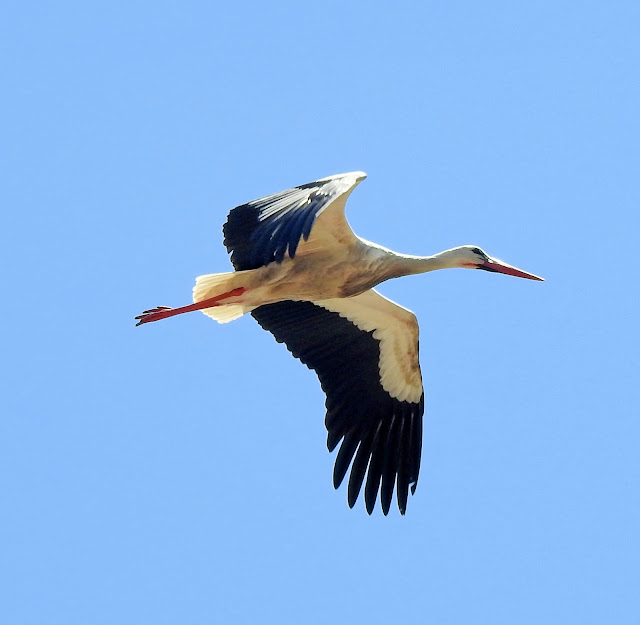The White Stork (Ciconia ciconia) is a majestic bird, notable for its predominantly white plumage with contrasting black flight feathers. Adults boast impressive red legs and long, pointed red beaks. They average a length of 100–115 cm from beak to tail and have a wingspan ranging from 155 to 215 cm.
To identify the White Stork, look for its white body, black wingtips, and distinctive red legs and beak. In flight, they extend their necks and legs, presenting a stretched-out appearance. Juveniles have duller beaks and legs, which become brighter as they mature.
White Storks favor open farmlands, grassy meadows, and shallow wetlands. They avoid dense vegetation, preferring areas where they can easily spot and access their prey.
The White Stork breeds across Europe, northwestern Africa, southwestern Asia, and southern Africa. It is a long-distance migrant, wintering as far south as South Africa and on the Indian subcontinent.
These social birds can be seen in flocks, especially during migration. They are monogamous breeders, with both parents involved in nest building and care of the young. They walk with a slow, steady gait and rest with their heads hunched between their shoulders.
The White Stork is largely silent, but it is known for its bill-clattering display, which resonates from its throat pouch and serves as a form of communication.
White Storks build large stick nests, often reused for several years. Females lay clutches of usually four eggs, with both parents sharing incubation duties. The young fledge after about two months but remain dependent on their parents for a short while thereafter.
The White Stork can be confused with the yellow-billed stork, great white pelican, and Egyptian vulture when seen at a distance in flight. However, differences in beak shape, leg length, and flight posture can help distinguish these species.
As carnivores, White Storks consume a variety of prey, including insects, fish, amphibians, reptiles, small mammals, and occasionally small birds. They forage on the ground and in shallow waters.
Least Concern by the IUCN. Its populations have benefited from conservation efforts, leading to reintroduction in areas where it had previously disappeared due to changes in land use and industrialization.









































